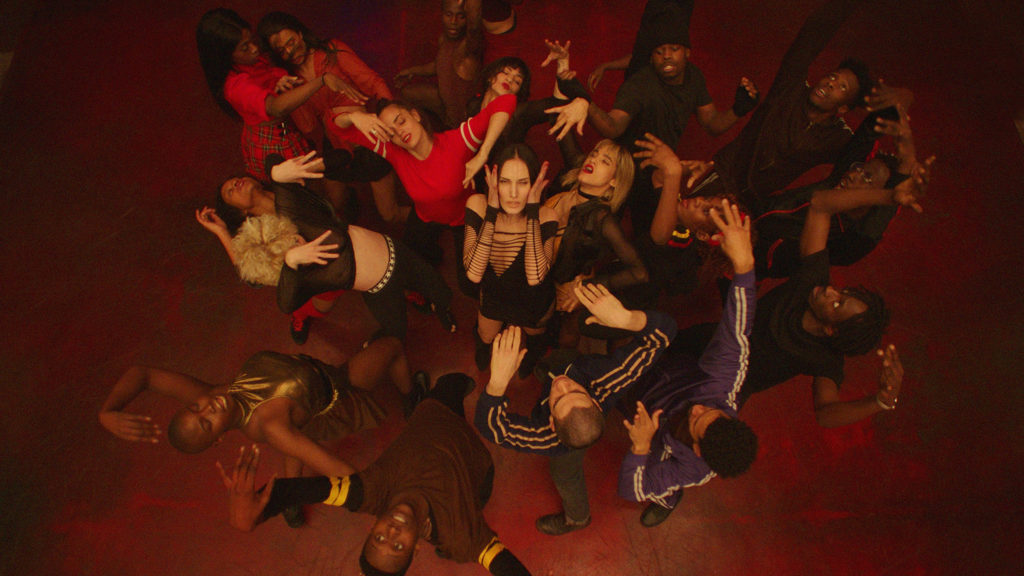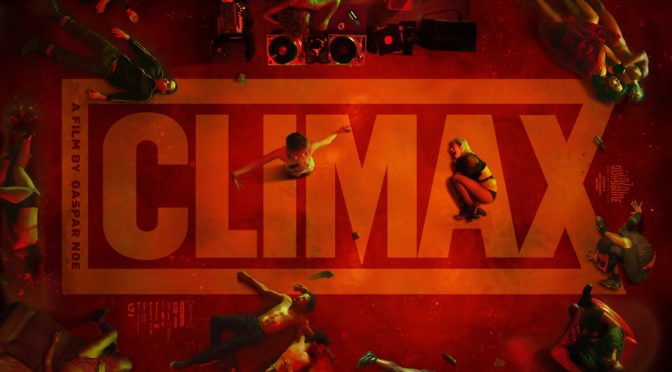Regardless of his filmmaking talents, Gaspar Noé (Irreversible) is first known for being a provocateur. His films have angered and reviled audiences around the world and led to walk outs due to the content onscreen. Climax, while by no means even remotely close to mainstream, may be his most agreeable title to date, if agreeable is even a term that can be applied to anything Noé has created. The film follows a Parisian dance troupe as they initially practice then unwind by throwing a party. The mood is jovial until things take a turn for the worse. People start feeling something strange and they soon realize that someone has spiked their sangria with a heavy dose of drugs and it sets off a night of drug-fueled chaos.
The best part of any Noé film isn’t the narrative or the characters, it’s the pure experience. At his best, Noé uses a blend of unnerving sound effects, hypnotic music, high-contrast lighting, and swirling cameras to create a cinematically-induced euphoria or, in some cases, total paralysis. It’s a pure, visceral response that few films can produce and even fewer filmmakers can consistently create. There are a few moments in Climax that reach this level of reaction. An opening dance number features the cast rhythmically gyrating and contorting their bodies in ways that we know are choreographed but feel like instinctual movements borne from the thumping electronic music that overwhelms our ears. The effect is mesmerizing as it inundates the senses and transfixes your attention. Sadly, this is the only scene of the film that is able to produce this reaction.

The majority of the film focuses on the pandemonium created by the high dancers. The drugs produce different responses in each person. Some become overly emotional while others become wild or even violent. Very few of them make good decisions as it becomes clear that the film has morphed into a horror movie with the negative effects of the unknown substance as the primary threat. The characters’ behaviors can quickly become tiring. We haven’t developed affections towards them and have little investment in their well-being which makes their blatantly stupid decision-making irritating, even if it is understandable given their physical state. Mimicking their world rapidly spiraling out of control, Noé and his regular cinematographer Benoît Debie (Spring Breakers) use a swirling camera that is as mobile as the dancers, weaving through their tangled bodies and effectively capturing their confusion. Yet, because of the poorly sketched characters and their self-destructive actions, the intended horror is kept arm’s length.
As usual, Noé is guilty of several indulgences. The film opens with seemingly never-ending interviews with each of the dancers asking why they want to join the troupe and the party pre-drugs features several scenes of dialogue as inane as the characters are inebriated. Noé lets these scenes stretch into minutes long takes of drunken friends talking about which of the other dancers they want to sleep with as they go into excessive, graphic detail for no purpose. Furthermore, there are plot points and character outcomes that are present for no reason other than shock value. These sections pad out the film’s short runtime and highlight how little material is actually present. Climax has moments of the Noé’s best talent of creating enveloping visceral responses, but the film’s drug-trip-as-horror premise fails to connect.

3/5 stars.
